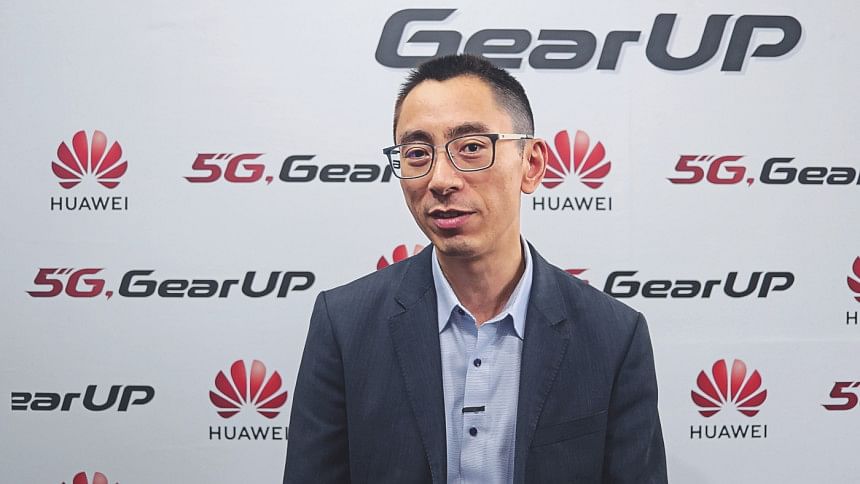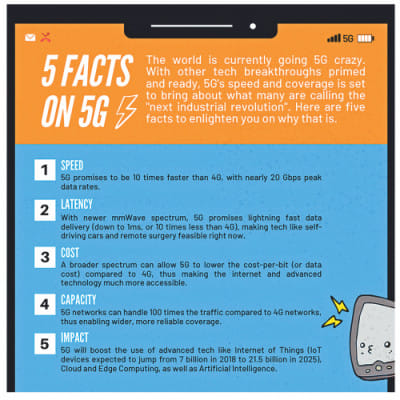In conversation with the CEO of Huawei Technologies Ltd. (Bangladesh)

How has Huawei innovated in the field of networking recently? What puts Huawei’s 5G technology ahead of the rest?
“Huawei started its journey back in 1987 and every year we allocate almost 15% of our revenue in research and development. That is why we have been able to be innovative and have brought the most advanced technologies to the people. To make 5G accessible, we have invested around USD 4 billion in this technology for over 10 years. This continuous engagement in research and new innovations has given us a position of great advantage over others in the industry.”
What features of 5G should countries like Bangladesh look forward to?
“Huawei started its journey in Bangladesh back in 1998. It has been 21 years and we have strong feelings for the people here and appreciate how they have accepted Huawei. Here in the Digital Bangladesh Fair, we have introduced end-to-end 5G technology. There is live 5G speed testing for radio and smartphones, and also our new 5G foldable phone is already being rolled out for commercial distribution.Bangladesh is a developing country and I think there are a lot of advantages, such as, wide broadband range, low latency, massive connections, etc. We know that there isn’t a nationwide broadband access in the country yet. With the introduction of technologies like 5G, it will be easier for the people in rural areas to get access to the internet. In countries like China and Thailand, such digital infrastructure has enabled the young people to be innovative and create new technologies, solutions and products. Ultimately they brought value to the society with ventures like Alibaba, Tencent and Grab. All of this was possible because of great infrastructure, and Huawei is here to be with Bangladesh in introducing a new ICT infrastructure and making the younger generation more innovative. We are also working with the government and some universities to provide platforms to interested minds for innovation and financial inclusion.”
A white paper from Huawei identified 8 commercial uses of 5G. Which among those do you think has the best potential for Bangladesh and other South Asian countries?
“As I said, 5G is a very new technology and more and more countries are gradually trying to launch their 5G network. So what makes 5G so important? I believe in the saying that 4G changed our lives, but 5G will change society. It will act as a powerful enabler for all industries. If we consider the case of Bangladesh, it is currently hard to ensure good healthcare and education in the remote rural areas of the country. But with the help of an ICT infrastructure equipped with 5G, it will be possible to ensure remote education and healthcare. This will be the first step. The next step for Bangladesh will be to move to the next revolution based on Industry 4.0. 5G will play important roles in ensuring smart manufacturing, smart mining and many other such cases. So, I see Bangladesh as a huge market with a big population and even bigger potential. I hope we Huawei can be a part of this journey with Bangladesh.”

Do you think Bangladesh was easier to penetrate compared to its South Asian counterparts like Cambodia or Vietnam?
“Huawei has been here in Bangladesh for about 21 years and we really appreciate the support from the local government and the society. It was one of the first countries to welcome and support Huawei. The cooperation of the local government has made us feel like one of the local companies of Bangladesh. So, we love it here and are glad to offer all our support to the government’s initiative to welcome the 5G network here in Bangladesh.”
What do you deem to be the biggest challenges in rolling out 5G in Bangladesh?
“Spectrum and sites are very important when we are talking about wireless network. By site, we mean both in terms of capacity and coverage. Bangladesh is a very densely populated country and it is not yet possible for us to cover this huge population with nearly 14,000 physical sites throughout the country. One important factor here is indoor coverage. Cities like Shenzhen are far ahead of Bangladesh in this case. Besides, we need more spectrum here in order to ensure wider bandwidth. The telecom operators currently are not offering enough spectrum for 5G. Fortunately BTRC is working on that and we believe that in the near future more spectrum will be available so that more people can enjoy better coverage, capacity and bandwidth.”

 For all latest news, follow The Daily Star's Google News channel.
For all latest news, follow The Daily Star's Google News channel. 



Comments